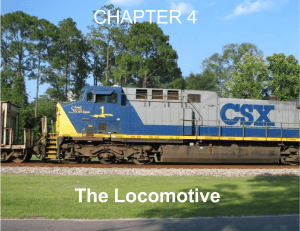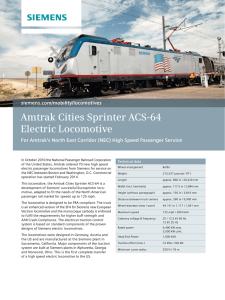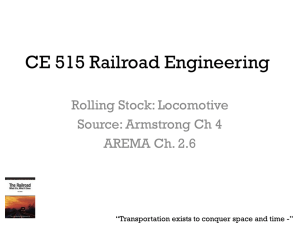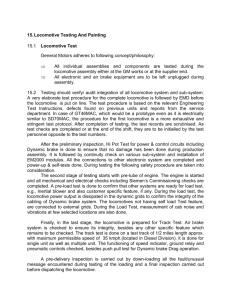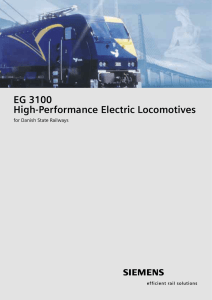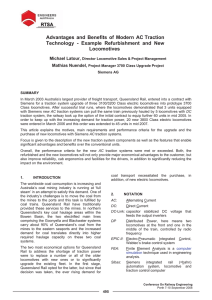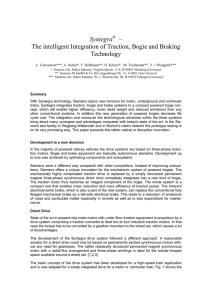E40AC Narrow Gauge Electric Locomotives
advertisement
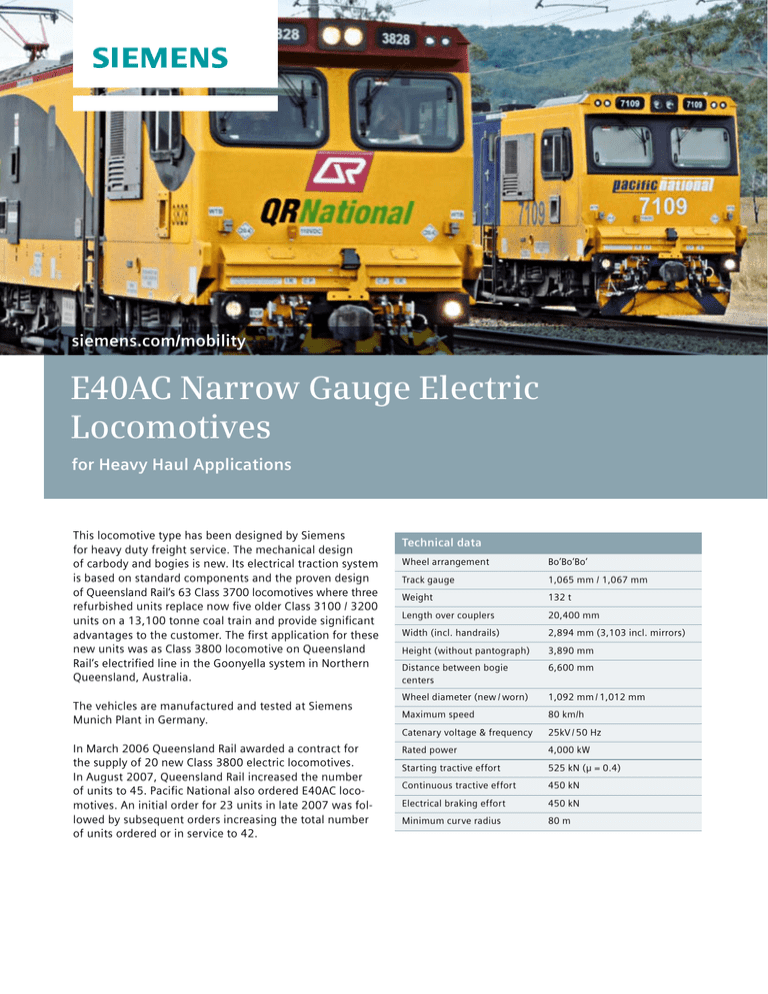
siemens.com/mobility E40AC Narrow Gauge Electric Locomotives for Heavy Haul Applications This locomotive type has been designed by Siemens for heavy duty freight service. The mechanical design of ­carbody and bogies is new. Its electrical traction system is based on standard components and the proven design of Queensland Rail‘s 63 Class 3700 locomotives where three refurbished units replace now five older Class 3100 / 3200 units on a 13,100 tonne coal train and provide significant advantages to the customer. The first application for these new units was as Class 3800 locomotive on Queensland Rail‘s electrified line in the Goonyella system in Northern Queensland, Australia. The vehicles are manufactured and tested at Siemens ­Munich Plant in Germany. In March 2006 Queensland Rail awarded a contract for the supply of 20 new Class 3800 electric locomotives. In August 2007, Queensland Rail increased the number of units to 45. Pacific National also ordered E40AC locomotives. An initial order for 23 units in late 2007 was followed by subsequent orders increasing the total number of units ordered or in service to 42. Technical data Wheel arrangement Bo’Bo’Bo’ Track gauge 1,065 mm / 1,067 mm Weight 132 t Length over couplers 20,400 mm Width (incl. handrails) 2,894 mm (3,103 incl. mirrors) Height (without pantograph) 3,890 mm Distance between bogie ­centers 6,600 mm Wheel diameter (new / worn) 1,092 mm / 1,012 mm Maximum speed 80 km/h Catenary voltage & frequency 25kV / 50 Hz Rated power 4,000 kW Starting tractive effort 525 kN (µ = 0.4) Continuous tractive effort 450 kN Electrical braking effort 450 kN Minimum curve radius 80 m The locomotive is a wide body design, suited for the narrow gauge systems in Australia (Queensland) and southern ­Africa. The carbody is designed to allow tensile and compression forces up to 4 MN (buff load = 4.5 MN). It is equipped with an AAR F-type coupler, anti climber and provides enhanced cab protection for the safety of the crews. The locomotive is equipped with a Wabtec AAR type 26L Brake System, a Wireless Remote Control Distributed Power System and Electronically Controlled Pneumatic Brake System (ECP). The engine room layout is similar to the QR Class 3700 locomotive and the majority of the electrical components are identical. This provides the customer with the benefits of a proven design such as interchange ability and ease of maintenance as well as reduced effort for spare parts management and stocking. To further enhance reliability, all wiring, cabling and piping is routed and protected within the locomotive carbody. The electric brake system of the E40AC can feedback train brake power into the catenary system or, on unavailability of the overhead line, dissipate the brake ­energy via the three brake resistor stacks of the locomotive. Energy feedback into the catenary system can provide significant energy savings per year and thus help significantly reduce CO2 emissions. With a continuous tractive effort of 450 kN, up to 32 km/h, the E40AC locomotive is the highest powered narrow gauge electric locomotive in the world. Tractive effort diagram Braking effort diagram Tractive effort [kN] 550 Brake effort [kN] 550 500 500 450 450 400 400 350 350 300 300 250 250 200 200 150 150 100 100 50 50 0 0 0 10 20 30 40 50 60 70 80 90 100 110 120 Speed [km/h] 0 10 20 30 40 50 60 70 80 90 100 110 120 Speed [km/h] The traction control system consists of six input- and three output-, water cooled IGBT inverters, where two input inverters feed one DC link. Each of the three output inverters is connected to the two AC traction motors of one bogie. Additionally, each DC link supplies one auxiliary inverter, meaning two out of three are required to ensure normal operation. To enable rheostatic braking, three of the Brake choppers are installed to divert the train brake ­energy onto the three brake resistors of the locomotive. Traction and locomotive control is performed by the proven Sibas® 32 control system. The core of the control system is the Multifunction-Vehicle-Bus (MVB), interfacing with the subsystem control computers, all the I / O stations as well as the Man-Machine-Interfaces such as drivers desk controls and displays. Locomotive units connected in multiple unit interface via a Wire Train Bus (WTB), whilst further units in the train consist are connected via Wabtec’s Radio Frequency controlled Distributed Power (DP) system. Locomotive layout Air conditioning unit Traction motor blower Main converter Main transformer Auxiliary switchgear compartment Inertial air filter boxes Brake rack Brake resistor Cooling rack Battery box Air compressor The driver’s desk layout was designed in close cooperation with the Queensland Rail Drivers Cab Committee. The right side arrangement shown is customer specific and variable to a certain extent. A small kitchenette at the back of the cab contains a fridge, hotplate, sink and a microwave for the drivers’ convenience. The bogie is completely new developed. The frame is a welded structure which integrates all connecting points for the traction arrangement, drive units and bogie brake equipment. Bogie frames of center- and end bogies are ­interchangeable. Bogie brake equipment consists of one tread brake unit per wheel. Park brakes are installed on the center bogie. Kitchenette The drive unit consists of an axle hung, frameless asynchronous AC traction motor and gear unit. Based on the successful and proven design for the Class 4000 loco­motive, this motor provides high torque and power within the restricted space of a narrow gauge bogie. Driver’s desk Drive Siemens AG Infrastructure & Cities Sector Rail Systems Division Locomotives and Components P.O. Box 3240 91050 Erlangen Germany www.siemens.com © Siemens AG 2012 Printed in Germany TH 066-120414 176774 DB 05120.5 Dispo 21715 c4bs 3925 Order No. A19100-V600-B325-V4-7600 Sibas® is a registered trademark of Siemens AG. The information in this document contains general descriptions of the technical options available, which do not always have to be present in individual cases. The required features should therefore be specified in each individual case at the time of closing the contract.
